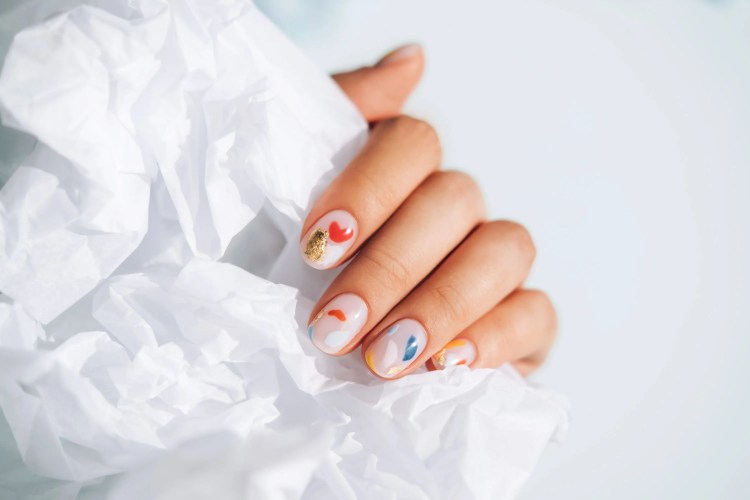For those looking for a manicure that is ultra-glossy, chip-resistant, and can sometimes last up to four weeks. Gel nails are a growingly popular option. With a gel manicure, also called “shellac,” gel polish is combined with UV or LED lamps. To “cure” the lacquer and adhere it to the nail.
Because the components in gel polishes are made to stick to the nail more firmly. Than those in traditional polish, they can survive daily use with little to no chance of flaking or chipping. The drawback is that they can be very challenging to take off, especially if you’re used to using conventional nail lacquers.
You can have your gel manicure removed in a salon, but if you want to do it yourself at home. Following the proper steps to prevent harming your nails is crucial. This article on how to remove gel nail polish safely has been put together to ensure that you may enjoy your gel manicure while keeping your hands and nails safe.
Table of Contents
Preparation:
- To avoid smudging your work, arrange this process when you won’t busy since it takes 30 to 45 minutes.
- nail file (180 grit is best)
- A nail buffer (ideally 220 grit)
- A pot of petroleum jelly
- Cuticle oil
- about nail-sized bits of cotton cut into balls
- Acetone (acetone-free nail polish remover may not be strong enough to remove gel polish) (acetone-free nail polish remover may not be strong enough to remove gel polish)
- Some people prefer using tin foil for this procedure, but plastic food wrap produces a tighter barrier to prevent acetone leakage and is less likely to harm your nails.
- A gentle hand soap, ideally fragrance-free.
While using acetone, always cover any nearby surfaces because if it leaks or spills, it can remove varnish or other coatings from objects like furniture.
How to Remove a Gel Manicure
Cotton wool is applied to your nails (not your skin) using plastic wrap after being soaked in acetone. Working on your second hand while your fingers are already wrapped can be challenging, so it’s usually better to focus on one hand at a time or enlist assistance.
Just enough to compromise the gel’s seal and eliminate the sheen, take a nail file to the top coat of the gel polish. This will facilitate the acetone’s ability to dissolve the cured lacquer.
The skin around your nails and cuticles should next be covered in a thin coating of petroleum jelly to protect them from the acetone, which can cause irritation, redness, and Getting it on your skin could even cause injury.
To lessen the chance of any acetone accidently getting on your skin, cut your cotton balls or strip of cotton wool to the size of each nail. To determine whether a piece will fit properly, measure it against your nail.
Apply each cut cotton wool to each nail individually after soaking it in acetone and covering each fingertip with plastic wrap.
Gel Manicure
Most gel polish should be removed after leaving the wraps on for around 10 minutes. Using a washcloth dipped in warm water, remove and wipe off any excess gel paint on the nail, being careful not to rub the skin around it.
Then, using mild hand soap and warm water, wash your hands (or feet if you’re removing a gel pedicure).
After removing all the gel polish, gently buff your nails and rehydrate the skin using cuticle oil.
Then, apply petroleum jelly to the skin around your nails and cuticles. Rehydrating and shielding the skin around your nails can be accomplished by applying this daily for the following seven days.
Petroleum jelly is an occlusive that forms a barrier to help preserve moisture, whereas cuticle oil is an emollient that seeps into the skin. Humectants or hydration, oil-free formulations that draw water to the skin’s surface, are the third kind.
Typically, hand cream provides both hydration and protection; to get the most moisture, apply it before donning cotton gloves at night.
Staying Safe and Healthy
Although gel polish is attractive and durable, there are concerns involved. Although the polish itself is not considered carcinogenic, routine UV light exposure. (as well as exposure to other UV salon lighting, such as sunbeds) Can raise the risk of skin cancer and premature ageing.
Before getting your nails done, the American Academy of Dermatology (AAD) recommends applying a water-resistant. Broad-spectrum sunscreen with an SPF of 30 or higher to your hands. You can also wear black, opaque gloves with the fingertips cut off.
Polishes have the potential to dry and thin nail plates. Leaving them fragile, uncomfortable, and even weak. Remember to give your nails time to rest and mend by pausing between nail polish applications. Also, seeing your natural nails frequently is crucial. Because they might serve as early warning signs of several illnesses, including nail tumours.
Alternatives to Removal Using Acetone
Never peel or bite off your gel nail polish. Because the first method could weaken and damage your nails by removing a layer of the nail. With the latter, there is a chance that you can unintentionally consume some of the gel polish, which could be harmful to your health.
Wherever feasible, try to utilise gentler removal techniques rather than mechanically attempting to force. The gel polish off your nails as some places may urge you to do.
A better option is to let your gel manicure grow out. And trim it periodically to remove the gel polish gradually. But, this calls for a lot of patience, as it can take up to 12 to 18 months. For toenails to fully grow out after gel lacquer application on the fingertips.
Growing Out Your Gel Manicure or Pedicure
During the growing-out phase, this procedure might make nails appear unpleasant. Still, happily, there is a fix: you can use regular nail paint to make nail art, as Florida hairstylist Olivia Smalley first demonstrated in 2020 when lockdowns caused her to have an overgrown gel manicure.
Smalley used a glitter polish to fill up the area between her cuticle. And the gel polish that had grown out to create a reverse French manicure. To create the appearance of two-tone block colour, you can also choose a contrasting shade.
One advantage of wearing glitter polish is that the glitter flecks can help hide sharp lines between the polish and the nail. It can also be challenging to remove, so once your gel manicure has grown out. Use nail polish remover and plastic wrap to undergo the same removal procedure as in the previous phases.
Also read: Glowing Skin







